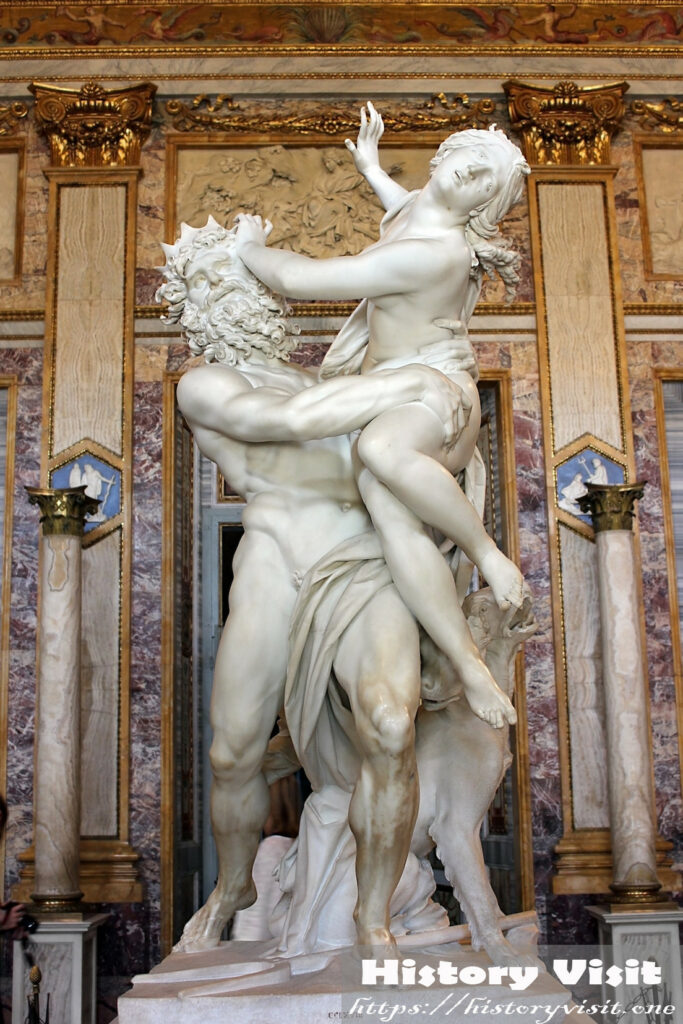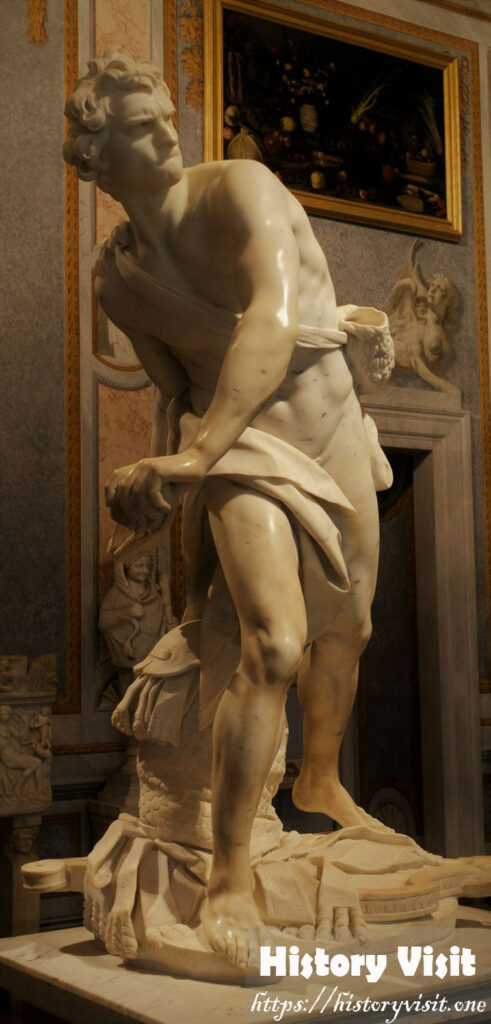The Titans of Art: Michelangelo Buonarroti and Gian Lorenzo Bernini

In the rich tapestry of art history, certain figures emerge as titans, shaping the very essence of artistic expression for generations to come. Two such luminaries, Michelangelo Buonarroti and Gian Lorenzo Bernini, transcend their respective epochs, leaving an indelible mark on the world of art. Born in different centuries, these masters—Michelangelo in the heart of the Italian Renaissance and Bernini during the Baroque period—exerted a profound influence, not just on the aesthetics of their times but on the trajectory of art as a whole.
Michelangelo Buonarroti: The Renaissance Maestro

Michelangelo, born in 1475 in Caprese, Italy, emerged as a singular force during the Italian Renaissance, a period marked by a revival of classical learning, humanism, and artistic innovation. His brilliance traversed the realms of sculpture, painting, and architecture, making an enduring impact on each.
The Sculptor Extraordinaire: Breathing Life into Stone

At the heart of Michelangelo’s sculptural triumphs lies an unparalleled ability to breathe life into cold stone. His magnum opus, the statue of David, carved from a single block of Carrara marble, stands as an iconic representation of human potential and idealized beauty. The statue, unveiled in 1504, captures not only the biblical hero but the very essence of Renaissance ideals—an exploration of human anatomy, a celebration of the classical past, and a profound understanding of proportion.

Michelangelo’s “La Pietà” is a masterpiece of Renaissance sculpture housed in St. Peter’s Basilica, Vatican City. Carved from a single block of Carrara marble, it depicts the Virgin Mary cradling the lifeless body of Jesus. Completed in 1499, the sculpture is celebrated for its exquisite detail and emotional intensity, showcasing Michelangelo’s unparalleled skill.
The Unfinished Slaves, a series of sculptures intended for the tomb of Pope Julius II, showcase Michelangelo’s unique approach to sculpture. Figures emerge from the marble, seemingly liberated from their stone confines. The raw, unfinished quality adds to the allure, inviting viewers into the creative process itself.
Ceiling of the Sistine Chapel: A Visual Symphony
In the realm of painting, Michelangelo’s crowning achievement is undoubtedly the ceiling of the Sistine Chapel. Commissioned by Pope Julius II, Michelangelo embarked on a Herculean task—to paint scenes from Genesis on the vast expanse of the chapel ceiling. The result is a visual symphony of biblical narratives, dynamic figures, and unparalleled beauty.
The Creation of Adam, one of the central frescoes, encapsulates the transcendent nature of Michelangelo’s art. The iconic depiction of the touching fingers of God and Adam has become an enduring symbol of artistic achievement. The intricate details, from the rippling muscles of the figures to the delicate rendering of God’s flowing beard, showcase Michelangelo’s meticulous craftsmanship.
Architectural Marvels: Blending Classicism with Innovation
Michelangelo’s architectural vision manifested in the grandeur of St. Peter’s Basilica in Rome. The dome, a later addition completed after Michelangelo’s death, stands as a testament to his ability to blend classical principles with innovative design. The Laurentian Library in Florence, another architectural gem, showcases his ingenuity in library design, with its harmonious use of space and light.
Gian Lorenzo Bernini: The Baroque Virtuoso

Fast forward to the 17th century, and the Baroque period unfolds with Gian Lorenzo Bernini at its helm. Born in Naples in 1598, Bernini emerged as a virtuoso not confined to a single artistic medium. His brilliance extended across sculpture, architecture, and even theatrical set design, embodying the dynamism and theatrical grandeur of the Baroque style.
Sculpting the Soul: Capturing Movement and Emotion
Bernini’s sculptures possess a unique ability to evoke emotion and capture fleeting moments in time. The Ecstasy of Saint Teresa, housed in the Cornaro Chapel, is a prime example. The sculpture depicts the mystical experience of the saint as she is pierced by an angel’s arrow, her face contorted in a rapture that blurs the lines between the divine and the earthly. The play of light and shadow enhances the dramatic effect, creating an immersive experience for the viewer.

The Rape of Proserpina, situated in the Borghese Gallery, is another masterful creation. The dynamic portrayal of Pluto abducting Proserpina captures movement and emotion frozen in stone. Proserpina’s flesh appears almost malleable, her desperate struggle against Pluto’s grasp palpable. The details, from the strands of her flowing hair to the veins in Pluto’s hand, showcase Bernini’s unparalleled skill.

Gian Lorenzo Bernini’s “David” (1623–1624) is a captivating Baroque sculpture housed in the Borghese Gallery, Rome. Dynamic and intense, it captures the biblical hero David in the moment before his battle with Goliath. Bernini’s masterful use of marble conveys emotion and movement, making it a timeless testament to his artistic genius.
Architectural Marvels: Theatrical Spaces and Grandeur
Bernini’s architectural achievements are as awe-inspiring as his sculptures. St. Peter’s Square, with its grand colonnade embracing visitors and directing their gaze toward the Basilica, exemplifies his ability to create spaces that engage and awe. The Cornaro Chapel, adorned with Bernini’s sculptures, is a masterclass in the fusion of sculpture and architecture, creating a harmonious and immersive space.
Theatrical Innovation: Art Meets Performance
Beyond traditional artistic realms, Bernini’s influence extended to theatrical set design. Collaborating with architect Francesco Borromini, the two transformed the sets for the Barberini family’s theatrical productions into immersive experiences. This collaboration marked a moment where art and performance converged, foreshadowing the immersive experiences of future centuries.
Legacy and Impact: Dual Artistic Triumphs
Michelangelo and Bernini, though separated by time, share a common thread—the ability to transcend artistic conventions and redefine the possibilities of their respective mediums. Their works not only embody the spirit of their times but continue to captivate and inspire generations of artists.
Influence on Successive Generations
The influence of Michelangelo and Bernini extends far beyond their lifetimes. Artists from the Renaissance to the present day have drawn inspiration from their innovative techniques, emotional depth, and dedication to pushing artistic boundaries. The echoes of Michelangelo’s David reverberate in modern interpretations of the human form, while Bernini’s dynamic sculptures find echoes in contemporary installations that seek to capture movement and emotion.
Shaping Artistic Movements
Michelangelo’s legacy is intertwined with the Renaissance, a period marked by a revival of classical ideals and a profound exploration of humanism. His commitment to anatomical precision and the expressive potential of the human form set the stage for generations of artists to come. Meanwhile, Bernini’s impact reverberates through the Baroque period, a time characterized by grandeur, emotion, and a departure from the restraint of Renaissance classicism. Theatrical, dynamic, and emotionally charged, Bernini’s works paved the way for the dramatic aesthetic of Baroque art. His sculptures, like the renowned “Ecstasy of Saint Teresa,” epitomize the era’s ornate exuberance. Michelangelo’s legacy, rooted in the Renaissance, emphasized the study of antiquity and humanism, while Bernini’s Baroque dynamism marked a shift towards theatricality and emotion. Together, they shaped two distinct epochs in art history, leaving an indelible mark on the evolution of artistic expression. Their contributions continue to inspire and influence artists, illustrating the enduring power of their respective movements.



Michelangelo Buonarroti was a painter, sculptor, architect and poet widely considered one of the most brilliant artists of the Italian Renaissance.
Thank you for sharing this information!